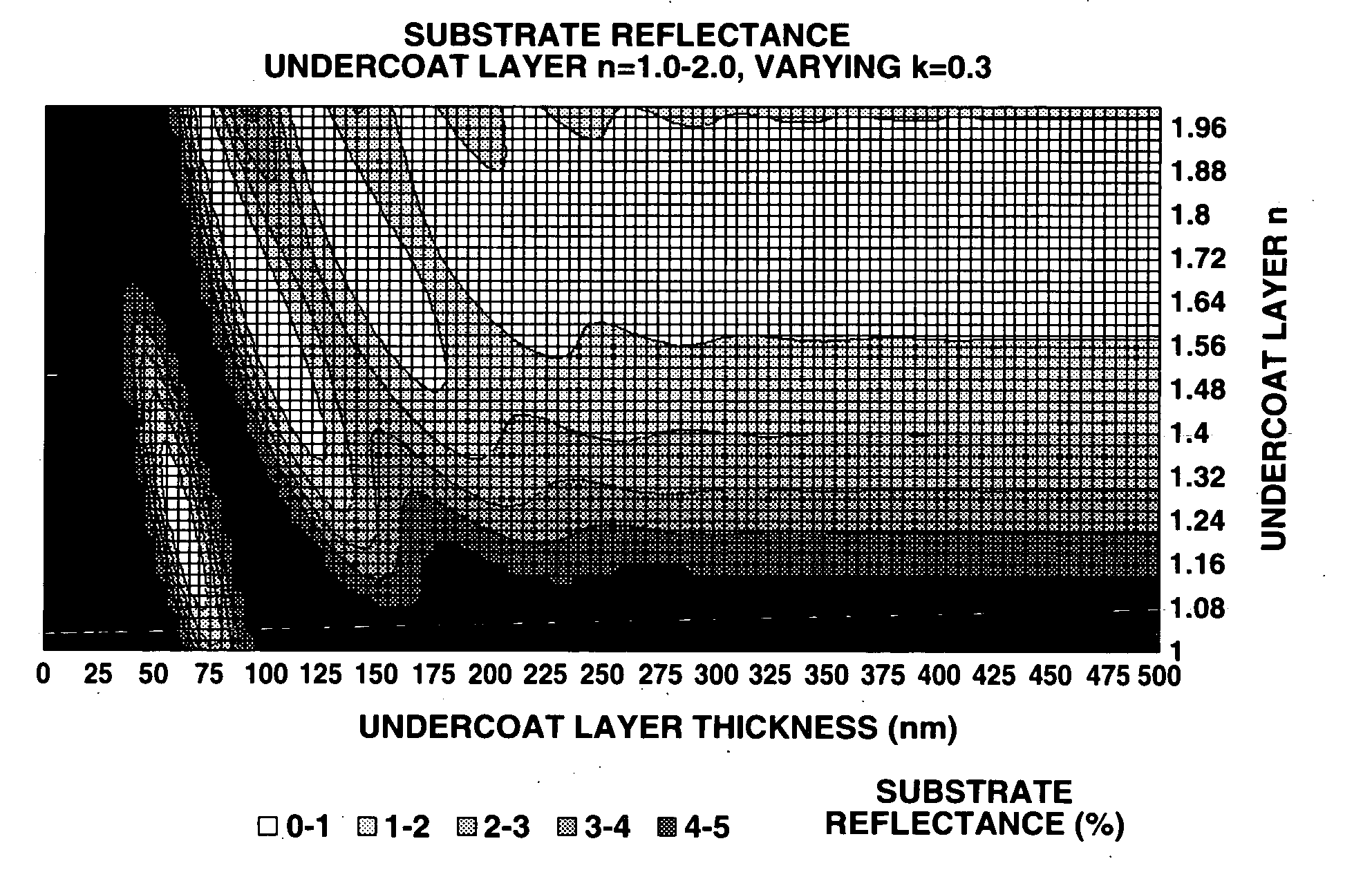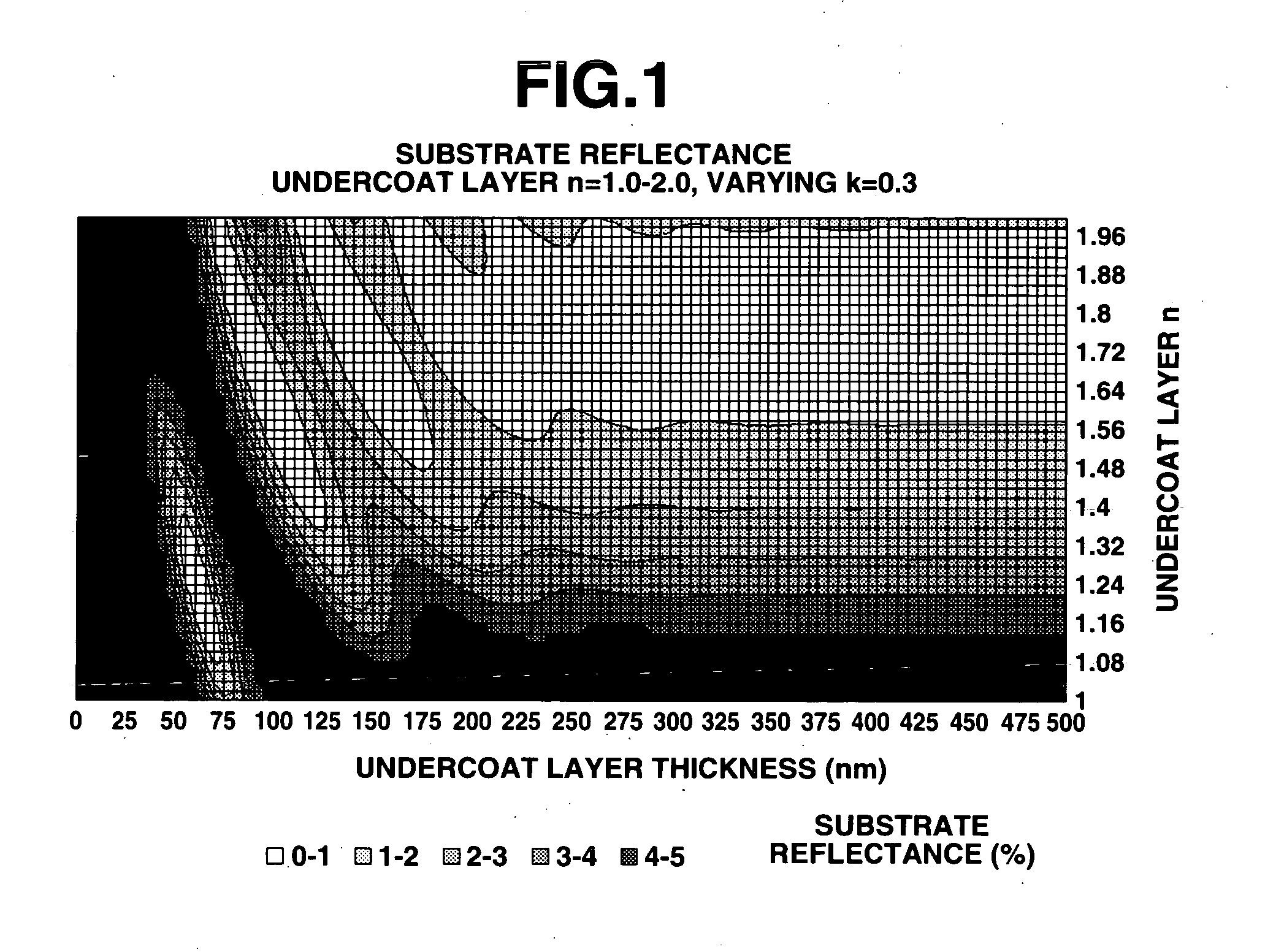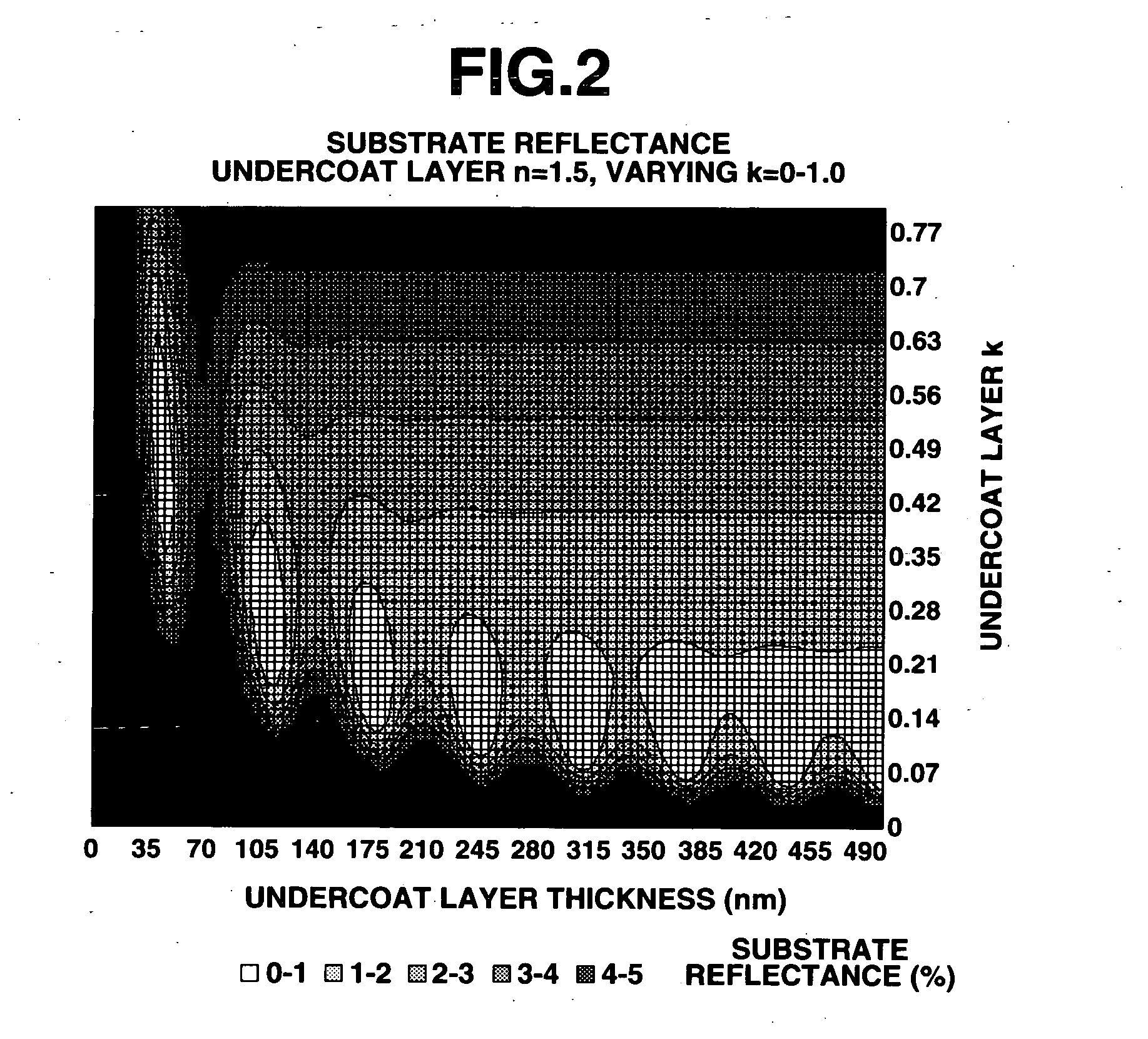Photoresist undercoat-forming material and patterning process
a technology of undercoat and patterning material, which is applied in the direction of photosensitive materials, photomechanical equipment, instruments, etc., can solve the problems of increasing the serious concern of surface roughness after etching, the essential limit of resolution determined by the light source wavelength, and the weak resistance of acrylate to substrate etching. achieve the effect of high etching resistan
- Summary
- Abstract
- Description
- Claims
- Application Information
AI Technical Summary
Benefits of technology
Problems solved by technology
Method used
Image
Examples
synthesis example 1
[0133] A 2-L flask was charged with 81 g of indene, 36 g of 4-hydroxystyrene, and 80 g of 1,2-dichloroethane as a solvent. In a nitrogen atmosphere, 1 g of boron trifluoride as a polymerization initiator was added to the reactor, which was heated at 60° C. whereupon reaction took place for 15 hours. The reaction solution was concentrated to one half in volume, and poured into a mixture of 2.5 L methanol and 0.2 L water for precipitation. The resulting white solids were collected by filtration and dried in vacuo at 60° C., leaving 35 g of a white polymer, designated Polymer 1.
[0134] The molecular weight (Mw) and dispersity (Mw / Mn) of Polymer 1 were determined by GPC. From 1H-NMR analysis, the ratio of monomer units in the polymer was determined.
[0135] Polymer 1: [0136] indene / 4-hydroxystyrene molar ratio=0.71:0.29 [0137] Mw=8,600 [0138] Mw / Mn=1.89
synthesis example 2
[0139] A 2-L flask was charged with 55 g of indene, 66 g of 4-hydroxyindene, and 80 g of 1,2-dichloroethane as a solvent. In a nitrogen atmosphere, 1 g of boron trifluoride as a polymerization initiator was added to the reactor, which was heated at 60° C. whereupon reaction took place for 15 hours. The reaction solution was concentrated to one half in volume, and poured into a mixture of 2.5 L methanol and 0.2 L water for precipitation. The resulting white solids were collected by filtration and dried in vacuo at 60° C., leaving 35 g of a white polymer, designated Polymer 2.
[0140] The molecular weight (Mw) and dispersity (Mw / Mn) of Polymer 2 were determined by GPC. From 1H-NMR analysis, the ratio of monomer units in the polymer was determined.
[0141] Polymer 2: [0142] indene / 4-hydroxyindene molar ratio=0.48:0.52 [0143] Mw=6,500 [0144] Mw / Mn=1.55
synthesis example 3
[0145] A 2-L flask was charged with 56.8 g of glycidyl methacrylate, 48.0 g of 4-hydroxystyrene, 25.5 g of indene, and 150 g of tetrahydrofuran as a solvent. The reactor was cooled to −70° C. in a nitrogen atmosphere whereupon vacuum evacuation and nitrogen flow were repeated three times. The reactor was warmed to room temperature, fed with 2.6 g of AIBN as a polymerization initiator, and heated at 60° C. whereupon reaction took place for 15 hours. The reaction solution was poured into 1,500 mL of isopropyl alcohol for precipitation. The resulting white solids were collected by filtration and dried in vacuo at 60° C., leaving 110.1 g of a white polymer, designated Polymer 3.
[0146] Polymer 3 was analyzed by 13C-NMR, 1H-NMR and GPC, with the results shown below.
[0147] Polymer 3: [0148] copolymerization composition (molar ratio), [0149] glycidyl methacrylate / 4-hydroxystyrene / indene=0.42:0.38:0.20 [0150] Mw=8,400 [0151] Mw / Mn=1.83
PUM
| Property | Measurement | Unit |
|---|---|---|
| wavelength | aaaaa | aaaaa |
| size | aaaaa | aaaaa |
| reflectance | aaaaa | aaaaa |
Abstract
Description
Claims
Application Information
 Login to View More
Login to View More - R&D
- Intellectual Property
- Life Sciences
- Materials
- Tech Scout
- Unparalleled Data Quality
- Higher Quality Content
- 60% Fewer Hallucinations
Browse by: Latest US Patents, China's latest patents, Technical Efficacy Thesaurus, Application Domain, Technology Topic, Popular Technical Reports.
© 2025 PatSnap. All rights reserved.Legal|Privacy policy|Modern Slavery Act Transparency Statement|Sitemap|About US| Contact US: help@patsnap.com



